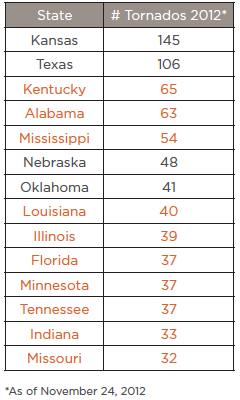What is the best way to build a birdhouse?
You may be able to use one tool with multiple functions, such as a multi-tool (a type of Swiss Army knife). However, the convenience afforded by these tools is achieved by reducing the effectiveness and efficiency for more complex projects. Most of us would rather have a tool belt with specific tools suited to the project, such as a hammer, screwdriver and utility knife. Why? Independent tools with specific uses are more powerful, more efficient and more effective at completing the tasks for which they were specifically designed. The tool belt acts as an integrator, a common platform on which the other functions are based.
ERM is the tool belt on which specific governance and compliance functions can be based. These two functions can exist independently, but when driven by risk-centric and data-grounded ERM practices, they become more efficient and effective. ERM-driven governance divisions utilize risk intelligence to promote risk awareness and attitude throughout an enterprise. ERM-driven compliance divisions utilize risk intelligence to bring all levels of enterprise into agreement with regulations, audit recommendations and corporate policies.
In today’s “risk-centric” business landscape, why is the combined approach of governance, risk and compliance (GRC) favored over ERM? GRC, like the multi-tool, has the capability to serve several functions — governance, risk management and compliance — in a holistic manner. This is meant to integrate silos and reduce redundancy, bureaucratic conflicts and work overlaps.
However, reality has shown that these benefits are often rarely or never realized. Real-world GRC implementations have been marred by repeated failures to anticipate or mitigate adverse risk events.
These events occur due to failures caused by the priority given to executive, governance and compliance objectives over solid risk-based business intelligence. Unable to effectively and efficiently drive a risk-centric organization, GRC is a tool weakened by its complexity.
The problems with multi-tools are the same problems faced by GRC. Most people — in this case, organizations — use only one or two tools, regardless of effectiveness or efficiency. More often than not, in current business implementations, GRC has a tendency to be driven primarily by regulations and largely bureaucratic objectives. The priority given to governance and compliance objectives over risk management has reduced the effectiveness and efficiency of ERM divisions. ERM has been demoted to an endorsement tool, one that is used to validate executive, governance and compliance processes and functions. This reversal of priorities costs organizations billions of dollars.
Don’t believe me? From the infamous Ford Pinto memo, to BP Deepwater Horizon, to the $6 billion JPMorgan debacle and most recently Hurricane Sandy, we have seen how the focus on governance and compliance above real risk has substantially increased the effect of adverse risk events. These failures point to fundamental problems within GRC framework and implementation.
These problems suggest:
- There is not enough attention paid to the exhaustive discovery of risk, how risks are connected, and how risks are integrated into all business processes, functions and strategies.
- If governance and compliance functions continue to be given priority over enterprise risk management, organizations can expect to pay massive penalties to cover mistakes.
- Third, but by no means last, truly risk-centric organizations should have a belt of effective and efficient tools, each specifically suited to a task and driven by risk intelligence.
Without addressing these points, all-too-frequent and massive failures will continue to be a factor in business environments and a continued source of material for news media outlets. These failures should be anomalies. Driven by proper ERM implementation, a successful governance and compliance function can produce effective and sustainable benefits for all stakeholders.


